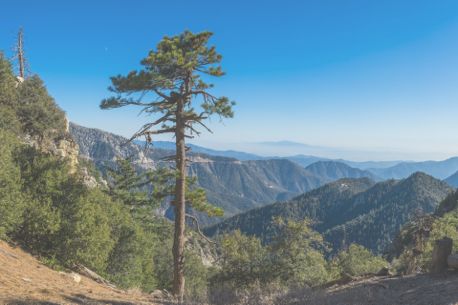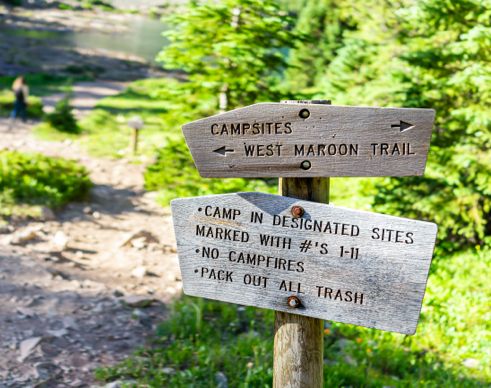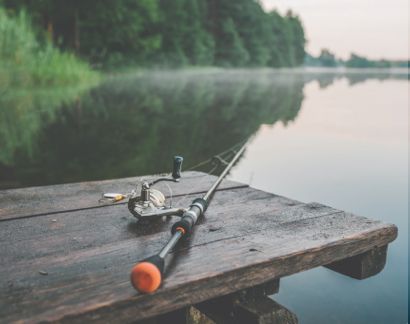Lolo National Forest, located in western Montana, spans over 2 million acres of diverse landscapes, from rugged mountains to lush river valleys. Whether you enjoy hiking, OHV riding, winter sports, or exploring scenic lakes and historic visitor centers, Lolo National Forest offers endless outdoor adventures.
RV camping in Lolo National Forest is a popular option among those who want to experience the forest's beauty up close. You can easily rent an RV from nearby rentals and choose from several campgrounds within the forest. A popular option is Fishtrap Lake Campground, which offers free camping and stunning lakeside views.
Camping in Lolo National Forest
You can stay at free or paid campgrounds or in dispersed camping areas during your Lolo National Forest RV camping trip. Lolo National Forest has four RV-friendly campground camping areas. You can also explore other top campgrounds in Montana if you prefer camping near Lolo National Forest. You can explore BLM lands in Montana as well. Make sure you look for nearby RV dumping stations to keep your motorhome hygienic.
Campgrounds in Lolo National Forest
Private Campgrounds Near Lolo National Forest
You can explore private RV-friendly campgrounds in nearby cities if you do not like the campgrounds within the forest.
Campgrounds by Lakes/Rivers
Budget-friendly Campgrounds

Lolo National Forest Hiking Trails
Hiking is one of the best things to do at Lolo National Forest. Here's a list of the hiking trails that you can explore during your visit.
Short Hikes for Beginners
Challenging Hikes for Experienced Hikers
Lakeside Trails

-
Historic Lolo Trail at Howard Creek
This point-to-point trail showcases stunning wildflowers. This trail is a footpath forged by generations of Native Americans who used the pathway as they traveled to their traditional hunting, gathering, and trading locations. The Historic Lolo trail was also used by the Lewis and Clark Expedition as they explored the western portion of the United States. Today, visitors will travel a path that looks much as it did over 200 years ago.
Length: 14.2 miles
Intensity: Intermediate
-
Lolo Peak Trail #1311
This trail leads visitors on a challenging hike to Carlton Ridge and then down again to Carlton Lake. At the lake, adventurous hikers may choose to continue and climb to the top of Lolo Peak, which sits at an elevation of 9,906 feet. Those who reach the summit of Lolo Peak experience breathtaking views of the Missoula and Bitterroot valleys.
Length: 11.1 miles
Intensity: Difficult
-
Maclay Flat Nature Trail
Take a leisurely hike along the Bitterroot River, enjoying the sounds of birdsongs over the gently flowing water. The river bottom is full of pines and cottonwoods that provide a home to hundreds of species of birds, making it the perfect stroll for bird-watching. The trail itself is wide, level, and dotted with benches for those who want to sit and soak up the day beside the river.
Length: 1.7 miles
Intensity: Easy
-
Bear Creek Trail #285
Burned in the Chippy Creek Wildfire of 2007, the Bear Creek Trail offers visitors a unique opportunity to witness the gradual rebuilding of natural forest habitats. The narrow and rocky trail features abundant opportunities for viewing wildlife along Bear Creek.
Length: 8.5 miles
Intensity: Difficult
-
Iron Mtn. Trail #242/Clark Fork Valley Overlook
This trail was used as a wagon road to transport silver ore from the Iron Mountain Mine to the river. In 1891 the mining companies abandoned the wagon road when a local railroad line began operating. It was more efficient and cost-effective to move the ore via train than the wagon road. Today, the trail offers a challenging hike for visitors and stunning views of the Clark River Valley below.
Length: 7 miles one-way
Intensity: Moderate
-
Babcock Mountain Trail #10
Visitors to the Babcock Mountain Trail #10 will take a wandering hike through classic prairie grasses before passing alongside towering ponderosa pines. In spring, riotous colors of blooming wildflowers dot the forest floor, and scenic overlooks offer stunning views of the Rock Creek Valley below.
Length: 2.5 miles (one way)
Intensity: Moderate to Difficult
Activities in Lolo National Forest
Here are some fun activities that you can experience during your visit to the national forest.
Winter months in Montana provide the perfect opportunity to enjoy ice fishing in the scenic Seeley Lake area. The region boasts several excellent lakes where anglers can try their luck at catching species such as westslope cutthroat trout, lake trout, and rainbow trout. Popular spots for ice fishing include Thompson Lakes and McGregor Lake in the Plains/Thompson Falls Area. Seeley Lake area is also another great option.
For those looking to enjoy water sports, the "Chain of Lakes" in the Seeley Lake Ranger District is an ideal location for waterskiing. The calm waters and scenic surroundings provide a perfect setting and suitable for beginners. Big Larch Campground is also renowned for water sports like waterskiing and is beginner-friendly.
Lolo National Forest offers miles of scenic roads and trails that are open year-round to mountain bikers. No permits, fees, or registrations are required for individuals or small groups. While most hiking trails and roads are accessible, it's recommended to check with the local ranger district for detailed trail conditions and guidance. Some popular biking trails include Blue Mountain Recreation Area, Sawmill Trail #24.0, and Sheep Mountain Trail #513.
Exploring the trails of western Montana on horseback is an unforgettable experience. Whether you're riding through dense forests or open meadows, the natural beauty is sure to impress. The Lolo National Forest Visitor Map, available for purchase, provides additional trail options. Recommended horse riding areas include the Missoula Area, Plains/Thompson Falls Area, and Seeley Lake Area.

-
Identifying Flora and Fauna

Lolo National Forest is home to a wide array of plant and animal life. Spring wildflowers blanket riverside forests while towering ponderosa pines grow thickly on the hillsides. The forest is also home to many animals, including bighorn sheep, which you can view from one of the bighorn overlooks.
-
Fishing

With several lakes, streams, rivers, and ponds, Lolo National Forest is the perfect place to drop a line in the water and wait for a nibble. Whether you prefer to fish from a boat on a lake or set up beside a bubbling creek, you’re sure to find a comfortable spot to reel in your dinner. For those who prefer to fish in the colder months, Lolo National Forest also offers ice fishing.
-
Geocaching

Geocaching is available in Lolo National Forest, but caches aren't allowed within the boundaries of designated wilderness areas. Geocaches must be non-commercial and cannot disturb any natural landscape. Look for caches under or behind naturally existing features like trees and rocks.
-
Nature and Bird Watching

The Lolo Creek Campground and Picnic Area is a perfect place to spot migratory songbirds. Stop by for a picnic and keep your binoculars handy to spot new and colorful feathered friends flying through the surrounding trees. White-tailed deer and migratory birds are common around the rivers and lakes within the forest, and bighorn sheep graze along the Babcock Mountain Trail.
-
Stargazing

Lolo National Forest is open to visitors 24 hours a day, so you are free to lean back and watch the stars move across the dark Montana sky. Removed from big-city light pollution, find yourself mesmerized by the beauty of the vast night sky. If the conditions are just right, you might even be lucky enough to witness the Northern Lights or see the Milky Way spread out before you.
How to get to Lolo National Forest
Address: Lolo National Forest Supervisor's Office, Fort Missoula Building 24, Missoula, MT 59804
Fee: Entry fee $0
By Car
There are several scenic routes to reach Lolo National Forest:
Montana Highway 83 on the Seeley Lake Ranger District provides stunning views of the "Chain of Lakes." This route is perfect for those who enjoy picturesque landscapes and serene water bodies.
U.S. Highway 12 along Lolo Creek on the Missoula Ranger District is a famous scenic route featuring interpretive signs recounting the historic journeys of Lewis and Clark and the Nez Perce Tribe.
By Air
Missoula International Airport (MSO): This airport is located approximately 15 miles from the forest. Driving from MSO to the forest typically takes about 30 minutes, depending on your specific destination within the forest.
Helena Regional Airport (HLN): This airport is 127 miles away from the forest and reaching the forest would take around 2.5 to 3 hours.
Glacier Park International Airport (FCA): Located 140 miles away from the forest, you can make the journey within 2-3 hours.
Seasonal Restrictions
Visitors should be aware of seasonal restrictions such as avalanche warnings, weather alerts, fire risks, and campground closures. Conditions can change rapidly, so it's important to check the official Lolo National Forest website for the latest updates and alerts before planning your trip.
Fees in the Lolo National Forest
While there is no general entry fee for Lolo National Forest, certain campgrounds and activities may require a fee. However, there are also free campgrounds available for visitors who are on a budget. Be sure to check individual sites for specific pricing details.
Frequently Asked Questions About Lolo National Forest
How many hiking trails does Lolo National Forest have?
Lolo National Forest has over 700 hiking trails. The forest has trails for every level of hiker, from easy strolls to advanced hikes for experienced hikers.
Is there a fee to get into Lolo National Forest?
No, there is no fee to get into Lolo National Forest. There may be fees or permits required to use certain areas of the forest, or for certain activities within the park, however.
What is the best time to visit Lolo National Forest?
The best time to visit Lolo National Forest is between June and August. The summer season at the forest is short, but visitors can get outdoors and hike, paddle, fish, and enjoy the warm weather. The park is also more accessible in summer, when all of the roads are open and the amenities are available.
What type of wildlife lives in Lolo National Forest?
Wildlife living in Lolo National Forest includes grizzly bears, mountain lions, wolves, mountain goats, bighorn sheep, moose, and elk. There are also thirty different varieties of ducks, plus eagles, swans, and a variety of other birds that live in the forest.
What is the closest town to Lolo National Forest?
Huson, Montana is one of the closest towns to the Lolo National Forest. Huson is a small town, and the closest town with a grocery store and a few more amenities is St. Ignatius.







